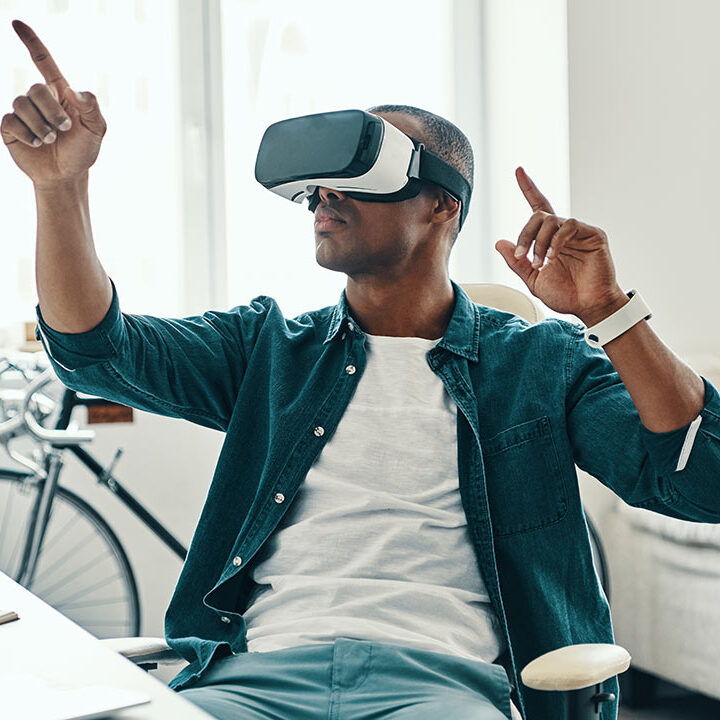How to Explore Augmented Reality Experiences in Tourist Destinations
How to Explore Augmented Reality Experiences in Tourist Destinations
Augmented reality (AR) is revolutionizing the way we explore tourist destinations by blending virtual enhancements with the physical world. This technology allows travelers to interact with digital content overlaid on real-world environments, offering an immersive and informative way to discover new places. From interactive museum exhibits to virtual tours of ancient ruins, AR can transform your travel experiences. Here’s a comprehensive guide on how to explore augmented reality experiences in tourist destinations.
Understand What Augmented Reality Is
Augmented reality involves overlaying digital elements, such as graphics, sounds, and videos, onto the real-world environment through devices like smartphones, tablets, or AR glasses. Unlike virtual reality, which creates a completely immersive digital world, AR enhances your surroundings while keeping you rooted in the physical world. This technology is particularly valuable for travelers seeking deeper engagement with their destinations.
Research AR-Friendly Destinations
Certain destinations are known for their innovative use of AR technology. Here are some examples:
- Rome, Italy: Use AR apps to visualize how ancient Roman landmarks like the Colosseum and Forum looked in their prime.
- New York City, USA: AR-enhanced walking tours let you experience the city’s history and architecture interactively.
- Tokyo, Japan: Tech-savvy attractions like AR-themed shopping districts and interactive art installations make Tokyo a must-visit for AR enthusiasts.
- Paris, France: Explore AR-based museum exhibits at iconic institutions like the Louvre.
- Natural Parks Worldwide: Many parks offer AR experiences that provide information about flora, fauna, and geological formations.
Choose the Right AR Apps and Devices
Your AR experience depends heavily on the apps and devices you use. Here are some top recommendations:
- Google Lens: Offers information about landmarks, plants, and artwork simply by pointing your phone’s camera.
- Snapchat and Instagram AR Filters: Popular for creating interactive AR experiences tied to specific destinations.
- Museum-Specific Apps: Many museums have dedicated AR apps to enhance exhibits, such as the British Museum’s AR tours.
- Travel AR Apps: Applications like ViewRanger and Wikitude provide AR overlays for hiking trails, city landmarks, and more.
- AR Glasses: Devices like Microsoft HoloLens or Magic Leap offer cutting-edge AR experiences, though they are less commonly used by casual travelers due to cost and accessibility.
Plan AR Activities Before Traveling
Research AR opportunities available at your destination. Visit tourism websites or travel forums to learn about AR-enhanced attractions, walking tours, and events. Look for reviews to gauge the quality of the AR experiences and download any necessary apps before you arrive. If you plan to use AR extensively, ensure your devices are fully charged, and consider carrying a portable power bank.
Integrate AR into Your Sightseeing
Augmented reality can be seamlessly incorporated into your sightseeing itinerary:
- Historic Sites: Use AR to visualize how monuments, ruins, or buildings appeared in their original form.
- Museums and Galleries: Enhance your visit with AR-guided tours that provide interactive details about exhibits.
- Nature Trails: Learn about local ecosystems, plants, and wildlife through AR-enhanced hiking apps.
- City Tours: Take AR-based walking tours that overlay historical images or animations onto current landscapes.
- Theme Parks: Enjoy AR games and experiences that immerse you in the attractions’ themes.
Stay Informed About Emerging AR Trends
Augmented reality is constantly evolving, and staying informed about new developments can enhance your travel experiences. Subscribe to tech and travel blogs, follow AR developers on social media, and join forums or communities dedicated to AR travel. Emerging trends include:
- Interactive AR Storytelling: Apps that narrate historical events or myths as you explore.
- Multilingual AR Experiences: Offering translations and cultural insights for international travelers.
- Wearable AR Devices: Compact, user-friendly glasses that may soon become mainstream.
- AR Integration with AI: Personalized recommendations based on your travel preferences and behavior.
Engage with Local Culture
While AR enhances your travel experience, remember to engage with the local culture and people. Use AR as a tool to deepen your understanding of the destination rather than as a substitute for direct interaction. For example, you can learn about local traditions or historical events through AR while still participating in cultural activities and talking to locals.
Tips for a Smooth AR Experience
- Check Compatibility: Ensure your smartphone or tablet meets the technical requirements for the AR apps you plan to use.
- Download Ahead: Download all necessary apps and content in advance, especially if you’re traveling to areas with limited internet access.
- Test the Apps: Familiarize yourself with the apps before traveling to avoid technical issues on-site.
- Mind Your Surroundings: Stay aware of your environment while using AR to avoid accidents or missing important real-world details.
- Adjust Brightness: Ensure your device’s screen is visible in different lighting conditions, especially outdoors.
Conclusion
Exploring augmented reality experiences in tourist destinations can elevate your travel adventures by blending education, entertainment, and immersion. With proper planning, the right tools, and an open mind, you can unlock new dimensions of discovery and enjoyment. Whether you’re uncovering the secrets of ancient ruins or interacting with vibrant cityscapes, AR offers endless possibilities to enhance your journeys around the world.








